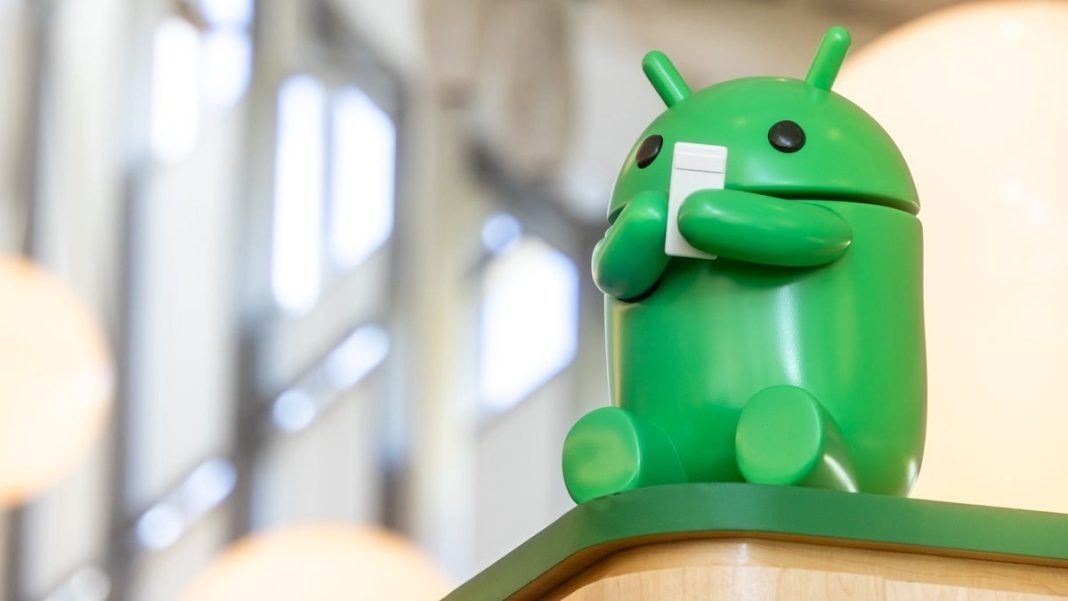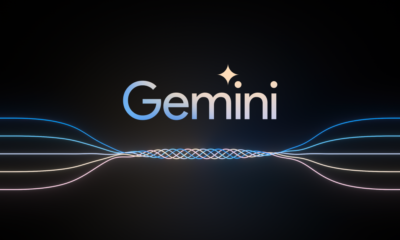Android
Google’s Pixel 4a gets a battery boost and a helping hand

The Google Pixel 4a, a beloved device known for its compact design and impressive camera, is getting a surprise revival. While officially past its scheduled software update lifecycle, Google has announced a new update aimed at addressing battery performance for some users. This isn’t just a simple patch; it’s a comprehensive program designed to extend the life of this popular phone.
The update, rolling out starting January 8, 2025, focuses on enhancing battery management. It introduces new features designed to improve battery stability. However, Google acknowledges that some users might experience shorter periods between charges after the update. They also note that changes in charging performance and how the battery level is displayed might occur. While this may sound concerning at first, it’s part of a larger plan.
This initiative, dubbed the “Pixel 4a Battery Performance Program,” acknowledges that some Pixel 4a devices have experienced a reduction in battery capacity and charging efficiency over time. It’s important to emphasize that not all Pixel 4a phones are affected. This program specifically targets those experiencing these issues. No other Pixel models, like the Pixel 4a 5G, are included in this program.
The most significant part of this program is the offer of free battery replacements for eligible devices. This is a considerable gesture from Google, showing their commitment to supporting their products even after their official support window has closed. Owners can check their eligibility for a free replacement through a dedicated online portal.
For those eligible for a battery replacement, Google is offering several convenient options. Walk-in repair centers are available in several countries, including the United States, Canada, the United Kingdom, Germany, Singapore, and India. For customers in the United States, a mail-in repair option is also available. However, battery replacements are subject to availability and are offered only in eligible locations.
Google also outlines some important caveats. If a Pixel 4a has sustained other forms of damage, such as liquid damage, damage from sharp objects, or damage resulting from excessive force, it might not qualify for a free battery replacement. Similarly, if the phone has pre-existing out-of-warranty damage, like a cracked screen, there might be a fee associated with those repairs. Google promises to provide a cost estimate before proceeding with any paid repairs, giving users the option to proceed or have their device returned.
Recognizing that not everyone will be able to get a battery replacement, Google is offering alternative options: a $50 USD payment (or local equivalent) or a $100 USD (or local equivalent) Google hardware discount code. This discount code can be used towards the purchase of another Pixel phone on the Google Store, providing a valuable incentive for those looking to upgrade.
Those eligible for the program have a one-year window, starting from the initial software release on January 8, 2025, to register and choose one of these options. The Pixel 4a Battery Performance Program will conclude on January 8, 2026.
The Pixel 4a originally launched with a 3,140 mAh battery, advertised to provide all-day usage. 1 This program aims to restore that original experience for affected users, or provide a reasonable alternative for those whose devices are beyond repair. This initiative underscores Google’s dedication to its customers and their devices, even years after their initial release. It’s a welcome move that will undoubtedly be appreciated by Pixel 4a owners.
Android
Android Auto expands horizons with 13.5 update and Pixel devices receive January 2025 security patch

The world of in-vehicle technology is constantly evolving, and Google’s Android Auto is keeping pace with its latest beta update, version 13.5. This release marks a significant step forward in inclusivity, broadening support beyond traditional cars and addressing some long-standing oversights. Meanwhile, Google has also rolled out the January security patch for its Pixel devices, ensuring users remain protected against the latest vulnerabilities.
One of the most noticeable changes in Android Auto 13.5 is the shift in terminology from “car” to “vehicle.” This seemingly small tweak reflects a broader commitment to supporting a wider range of transportation modes. The update explicitly mentions motorcycles within its code, signaling a move to cater to riders who have been utilizing the platform for some time.
This means that phrases like “Connected cars” are now “Connected vehicles,” and the “Connect a car” button has been appropriately updated to “Connect a vehicle.” This change may seem minor, but it represents a significant shift in perspective and a more inclusive approach to in-vehicle technology. It acknowledges that the road is shared by more than just four-wheeled automobiles.
Beyond the change in wording, the update also brings some exciting developments under the hood. New icons specifically designed for motorcycles have been added, along with assets for various vehicle brands, including Geely, Leap Motor, Fiat, and Lucid Motors.
The inclusion of Lucid is particularly noteworthy, as the company previously announced that its Lucid Air model would gain Android Auto support in late 2024. While the update hasn’t officially rolled out for Lucid vehicles yet, its presence in the Android Auto 13.5 beta suggests that the final certification is imminent. This hints at a closer integration between Android Auto and the growing electric vehicle market.
This expansion beyond traditional cars is a welcome development. For years, the term “car” within the Android Auto interface felt limiting, failing to acknowledge the diverse landscape of personal transportation. By embracing the broader term “vehicle,” Google is not only improving the user experience for motorcycle riders and other non-car vehicle owners but also positioning Android Auto as a more versatile and adaptable platform for the future of mobility.
While details about other in-development features, such as “Car Media,” remain scarce, the 13.5 update clearly demonstrates Google’s ongoing investment in Android Auto. This update lays the groundwork for a more inclusive and comprehensive in-vehicle experience.
In other news, Google has also released the January security patch for its Pixel lineup. This update addresses a number of security vulnerabilities, ensuring that Pixel users remain protected from potential threats. The update is rolling out to a wide range of Pixel devices, including the Pixel 6, 6 Pro, 6a, 7, 7 Pro, 7a, Tablet, Fold, 8, 8 Pro, 8a, 9, 9 Pro, 9 Pro XL, and 9 Pro Fold.
The January security patch includes fixes for 26 security issues dated 2025-01-01 and 12 issues dated 2025-01-05. These vulnerabilities range in severity from high to critical, underscoring the importance of installing the update promptly. Google’s dedicated security bulletin for its devices also lists an additional security fix.
The update is being distributed through both factory and OTA (Over-The-Air) images. Users should receive a notification on their devices prompting them to download and install the update. The update size can vary, but on a Pixel 9 Pro, it was observed to be a substantial 93.22 MB.
Specific build numbers for various Pixel models and regions have also been released, allowing users to verify they have received the correct update.
This concurrent release of Android Auto 13.5 and the January Pixel security patch showcases Google’s commitment to both innovation and security within its ecosystem. By expanding the reach of Android Auto and prioritizing user safety with timely security updates, Google continues to enhance the overall user experience for its customers. The focus on inclusivity in the Android Auto update, along with the consistent security measures for Pixel devices, demonstrates a holistic approach to technology development.
Android
A Fresh Start for Pixel: January 2025 update brings stability and refinements

The new year has just begun, and with it comes the first software update of 2025 for Google’s Pixel phones. Breaking with the usual Monday release, this update began its rollout on Tuesday, January 7th, bringing a mix of security enhancements and targeted fixes for various models. While the update focuses primarily on stability and minor improvements, it addresses some key user-reported issues, demonstrating Google’s commitment to refining the Pixel experience.
This January update, carrying the Android Security Patch Level of January 7, 2025, arrives with software version AP4A.250105.002 for all supported Pixel devices. This consistent approach to security updates ensures that all Pixel users benefit from the latest protections against potential vulnerabilities.
For Pixel 6 and 7 owners, this update primarily delivers the latest security patches. This is a crucial aspect of maintaining a secure and reliable mobile experience, providing peace of mind for users. While these models don’t receive specific feature additions or functional changes this time around, the consistent security updates remain a vital part of their ongoing support.
The Pixel 8 series, Google’s current flagship line, receives a more targeted set of improvements. This update addresses two specific areas: audio and user interface. Firstly, it tackles an audio delay and stability issue experienced by some users when using certain applications.
This fix should result in a smoother and more consistent audio experience across various apps, improving overall usability. Secondly, the update resolves an issue with the Pixel Launcher’s themed icon color display under certain conditions.
This issue, which involved an incorrect display of light and dark themed icons, has been a minor annoyance for some users. While a workaround involving manually switching Dynamic Color themes was available after the Android 15 QRP1 update last month, this direct fix from Google provides a more permanent and seamless solution.
The Pixel 9 series, Google’s top-of-the-line offering, benefits from the audio and UI fixes mentioned for the Pixel 8, along with additional improvements tailored to its advanced hardware capabilities. This update addresses a camera stability issue that occurred when switching to a connected camera under specific circumstances.
This fix will be particularly welcomed by users who frequently utilize external cameras with their Pixel 9 devices, ensuring a more reliable and seamless connection. Furthermore, the update resolves an issue involving flashing lines appearing on the screen under certain conditions. This display correction will contribute to a more polished and visually consistent user experience.
This January 2025 update underscores Google’s ongoing dedication to improving the Pixel experience. By addressing user-reported issues and providing consistent security updates, Google is ensuring that Pixel devices remain reliable, secure, and enjoyable to use. The focus on stability and refinement in this update sets a positive tone for the year ahead, promising further enhancements and innovations for Pixel users in the future.
In related news, Google recently shared information about the expected battery charge cycles for Pixel phones, providing valuable insights into battery health and longevity. This information helps users understand the typical lifespan of their device’s battery and plan accordingly.
Additionally, it was recently announced that the Pixel 4a will be receiving one final update as part of a Battery Performance Program, extending support for this popular device. This final update demonstrates Google’s commitment to supporting its older devices and ensuring they continue to function optimally.
Android
Streamlining the Pixel Launcher: A potential shift in widget management

The Android ecosystem thrives on customization, and widgets play a vital role in personalizing our home screens. From quick glances at weather updates to controlling music playback, widgets offer convenient access to app functionalities. However, the sheer abundance of widgets can sometimes feel overwhelming. Google seems to be addressing this with a potential update to the Pixel Launcher, introducing a more streamlined approach to widget management.
Recent explorations into the Android 16 developer preview have unearthed intriguing clues about a possible redesign of the Pixel Launcher’s widget selection process. Hidden within the launcher’s code are strings of text that hint at a significant change: a new button designed to “show all widgets.” Currently, the Pixel Launcher presents all available widgets in a single, comprehensive list. The addition of this button suggests a shift towards a more curated experience.
This isn’t just speculation based on text strings. Deep dives into the Pixel Launcher’s code have revealed a flag for a feature internally dubbed “tiered widgets.” This feature appears to be the driving force behind the change, filtering the initial widget list and introducing the “show all” button. Imagine opening the widget drawer and instead of being confronted with a wall of options, you see a more concise selection. This is the direction Google seems to be heading.
While this “tiered widgets” feature is present in both the Android 16 Developer Preview 2 and the Android 15 QPR2 Beta 2, it isn’t currently active. This means the widget list remains unchanged in these versions. Attempts to manually activate the feature have so far been unsuccessful, meaning we don’t yet have visual confirmation of how this new system will look. However, we can make some educated guesses based on recent changes to the Pixel Launcher.
With the Android 15 update, Google introduced widget recommendations, a feature that reserves space at the top of the widget list for system-suggested widgets categorized by type, such as “Social” or “Entertainment.” This suggests that the new default view might primarily showcase these recommended widgets, requiring users to tap the “show all” button to access the full catalog. This would create a cleaner, less cluttered initial experience, guiding users towards potentially relevant widgets while still providing access to the full range of options.
This potential change raises some interesting questions. How will Google determine which widgets are recommended? Will the algorithm be transparent, offering developers insights into the selection process? These are important considerations. A lack of transparency could lead to concerns about fairness and discoverability for smaller app developers. Ideally, Google would provide clear guidelines and perhaps even tools for developers to optimize their widgets for recommendations.
While this tiered system holds promise, alternative approaches exist. Some Android interfaces, like Nothing OS 3.0, employ a two-page, swipe-based widget list. This approach offers a different way to organize and present widgets, potentially offering a more intuitive browsing experience for some users. Whether Google has considered such alternatives remains to be seen.
It’s crucial to remember that this feature is still under development. Google could make significant changes before its official release. The current implementation, or lack thereof, in the developer previews doesn’t necessarily reflect the final product. However, the evidence suggests a clear intention to refine the widget experience on Pixel devices.
This potential shift towards a more curated and streamlined approach could significantly improve how users discover and interact with widgets, making the Android home screen even more personalized and efficient. We await further developments with anticipation, hoping for a system that balances simplicity with the rich customization that Android is known for.
-

 Apps11 months ago
Apps11 months agoGboard Proofread feature will support selected text
-

 News11 months ago
News11 months agoSamsung USA crafting One UI 6.1.1
-

 News10 months ago
News10 months agoBreaking: Samsung Galaxy S22 may get Galaxy AI features
-

 News10 months ago
News10 months agoSamsung Galaxy S23 Ultra with One UI 6.1 and all S24 AI features revealed
-

 News11 months ago
News11 months agoOne UI 6.1 Auracast (Bluetooth LE Audio) feature coming to many Samsung phones
-

 News10 months ago
News10 months agoSatellite SOS feature coming to Google Pixel phones, evidence leaked
-

 Apps8 months ago
Apps8 months agoGoogle’s fancy new Weather app is finally available for more Android phones
-

 News11 months ago
News11 months agoGoogle Pixel evolves as Europe’s third best selling flagship






